Posts Tagged ‘seeds’
26
Aug
Posted by naturesnippets in flowers. Tagged: dandelion, female, flowers, male, parachute, pollinate, seeds, Taraxacum officinale, wind. Leave a comment
It’s obvious why there are so many dandelions (Taraxacum officinale) around the yard.

Each flowerhead produces a LOT of seeds …

with a little help from the insects.

Wind disperses the

the parachute – like seeds.
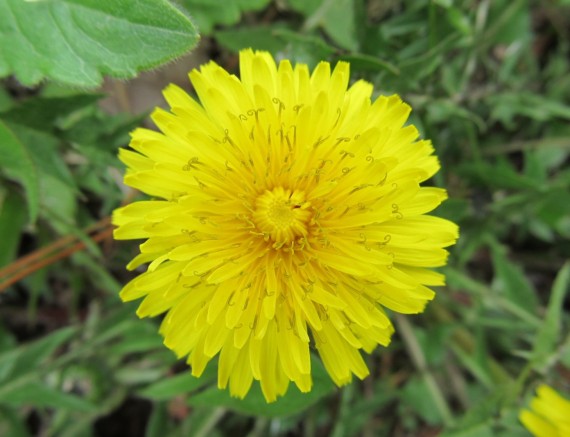
Each dandelion flowerhead contains both female and male flowers.
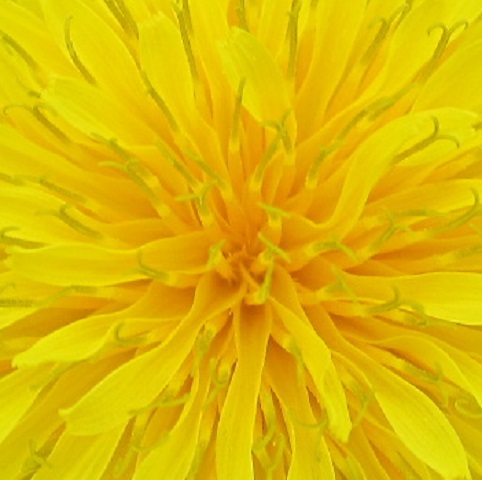
Dandelions don’t actually need wind or insects to pollinate the flowers. If you look close at a female flower and follow it down, you’ll see that they each of them is in a tube. The tube is the male flower. So, the female flower becomes pollinated as it grows out through the male flower.
1
May
Posted by naturesnippets in Birds. Tagged: chipping sparrow, hackberry tree, seeds. 2 comments
I sat near the picture window beside my computer.

A chipping sparrow started flitting around in the hackberry tree, and then

it seemed to be looking for something on the ground … I figure food.
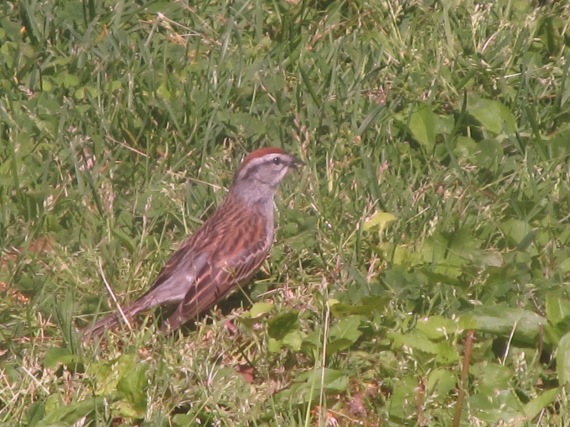
It continued searching for seeds before it flew off to where I couldn’t see it.
22
Apr
Posted by naturesnippets in Lichens. Tagged: backyard, discovery, grows, lichens, name, seeds, trees. 8 comments
This lichen grows on a tree in my backyard.
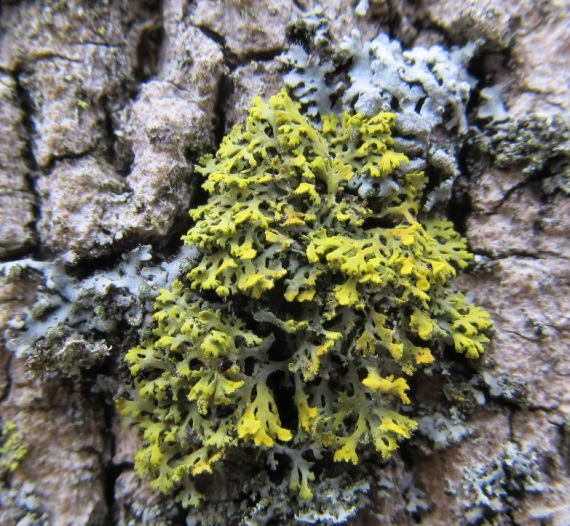
It doesn’t know its name. I don’t know its name,
which in no way diminishes my enjoyment of its discovery.
7
Sep
Posted by naturesnippets in Insects. Tagged: ants, catalpa, egg mass, larval cocoons, predator, seeds, silky web, tree. 2 comments
I’ve been redesigning my reflexology stone path recently, and have spent a lot of time sitting near the catalpa tree in my special place.
During all this, I noticed ants on two exposed roots, and going up and down the tree.

Why? What’s up there for the ants?
I started to remove the seeds from a pod so I could remove the papery covering down to the actual seed. A silky web covered what I thought at first was an egg mass.

Cropping showed they were larval cocoons. They’re like eggs only much larger.
I have a new book: Tracks & Sign of Insects and Other Invertebrates by Charley Eiseman and Noah Charney.

The larval cocoons were gone the next morning. I wasn’t sure, but it looked like a predator found them.

The small form on the left looked like a larva.
At least I solved the mystery of why the ants hurried up and down the catalpa tree.
17
Aug
Posted by naturesnippets in flowers. Tagged: buds, flower-of-the-hour, reseeding, seeds. 4 comments
I took the first pictures of flower-of-the-hour (Hibiscus trionum) in mid- June. It grows in the corner of my butterfly garden.

The buds

open around 9 a.m. daily.
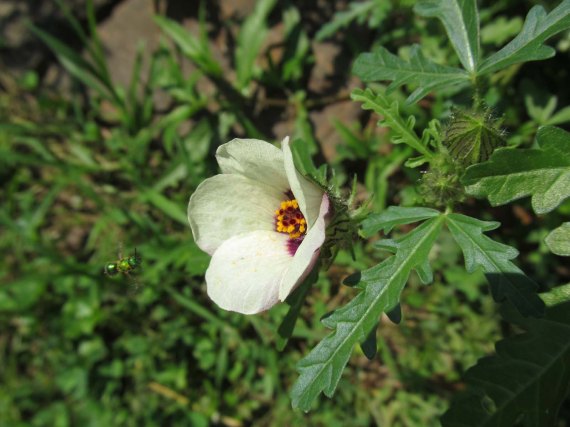
The flowers begin closing in the afternoon. Mine are shaded in the afternoon by a sweetgum tree. (Notice the bee on the left flying toward the flower.)

The bee gathers pollen.

Apparently it wears a lot too.
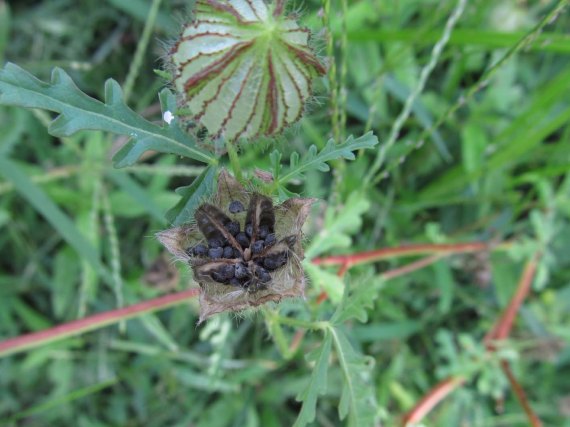
There’s no shortage of seeds for reseeding next summer.
14
Feb
Posted by naturesnippets in Plant Profiles. Tagged: catalpa, clusters, seedpods, seeds. 4 comments
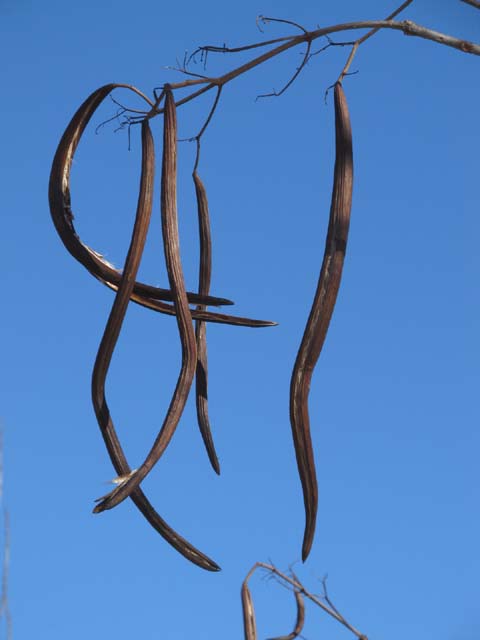
The clusters of 16-18 inch long seedpods
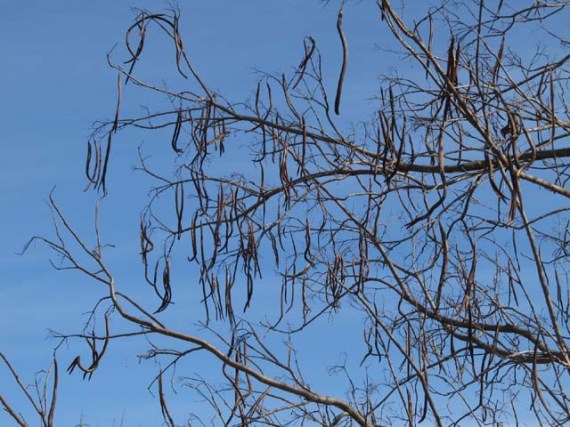
are quite noticeable on the catalpa tree.

Wind disperses the thin, flat seeds. The lower seed flapped in the wind as I took pictures.


The seeds stayed together in pods slow to open.
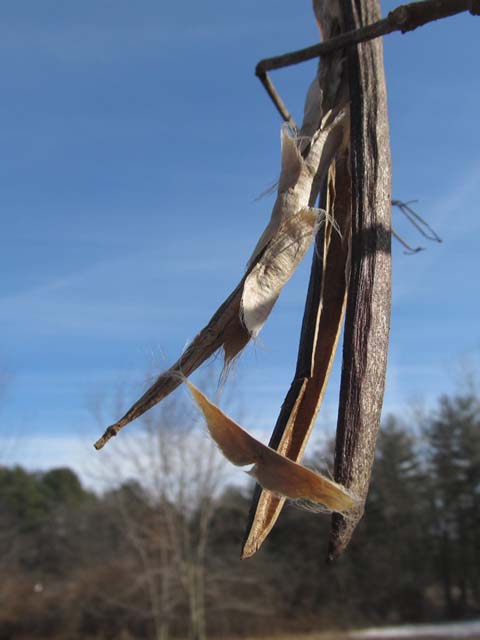
Reluctant to turn loose and fly?
———–

I went out in the evening to take orb pictures, like I do a few times a week.

The moon was three days from full and “hung” above the catalpa.
1
Jan
Posted by naturesnippets in Misc.. Tagged: climbing milkweed, ice, leaf miners, monarch butterflies, ripples, seeds, squirrel, water garden. 4 comments
The sky cleared this morning, and light rain and snow are expected later this evening.

The thought “yard walk-about” had me heading out the door. This milkweed seed obviously stood out where it was stuck to the ice in the water garden. I knew it wasn’t from the butterflyweed that grows in my butterfly garden. They released their seeds months ago.

Ripples in the ice created interesting shadow designs.

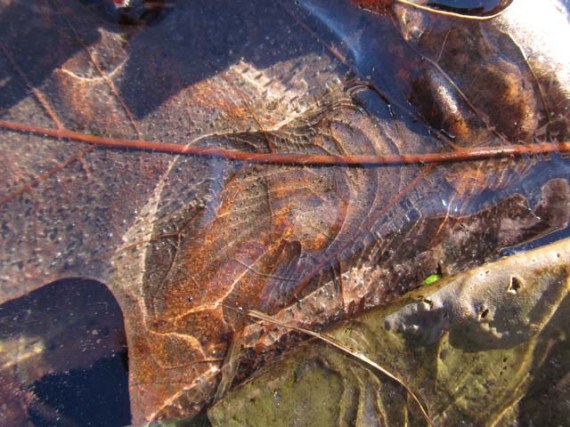

Feeding immature leaf miners left designs on this leaf.

This climbing milkweed (Amplelamus albidus) is considered a pest. Monarch butterflies will occasionally nectar on its small white flowers, and will lay eggs on the leaves late in the season.

Squirrels occasionally visit our yard. It stayed frozen on the limb of the elm tree, and hurried toward the trunk when I started walking.
———
I might just have to do another yard walk-about this afternoon too.
If I remember right, there’s a law against doing housework on New Year’s Day.
5
May
Posted by naturesnippets in Birds. Tagged: feed, insects, nuts, range, rufous-sided towhee, seeds, wheep, whistled. 12 comments
It’s amazing how a rufous-sided towhee can loudly sing its song or repeat its call note and not be located.
It took several days to locate the towhee that called from various places in our yard. They have a knack for concealment, even when in the open.

I accidentially ended up in the right place at the right time to locate the male while he repeated his “Drink your teeeeee” (wavering the “tea.”)

His call note was a sharp whistled “wheep.”
Rufous-sided towhee’s breeding range covers over half the U.S. and Canada. Southern Illinois is in its winter range. The female is dark brown where the male is black. They scratch for nuts, seeds and fruits to feed on, plus some insects.
16
Nov
Posted by naturesnippets in Insects, Plant Profiles. Tagged: bloom, butterflyweed, dispersed, metamorphosis, milkweed bugs, molt, pods, sap, seeds. 10 comments
This butterflyweed didn’t grow or bloom as normal last summer, because of the severe drought and heat.
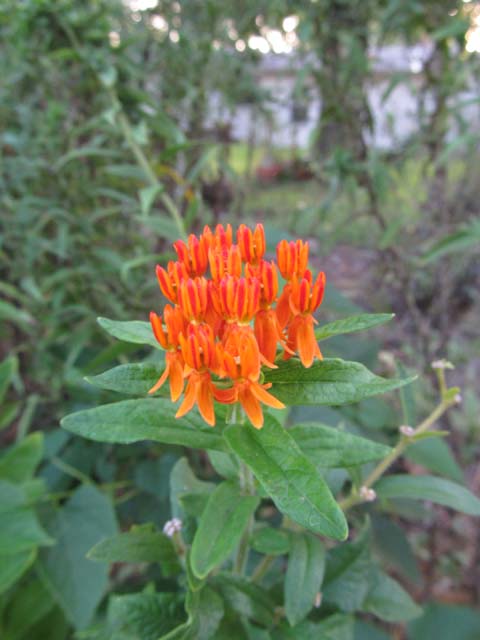
This clump of flowers bloomed early in September, instead of early June.

The pods started releasing their seeds the end of October.

Wind has dispersed their seeds.
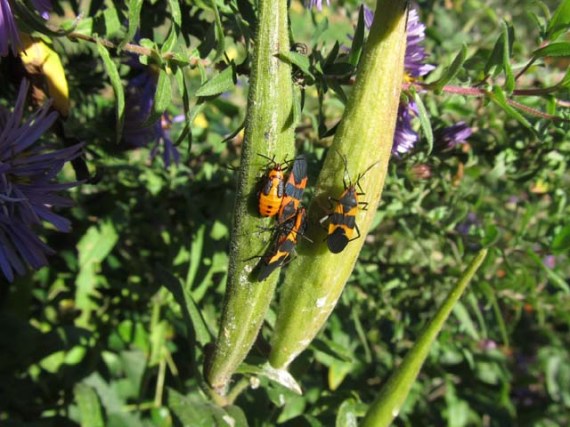
These milkweed bugs remained on the pods as they were maturing and drying. The white spots are from sap oozing from the pods where the bugs sucked the sap.

This picture shows 3 different sizes of their incomplete metamorphosis. The adults stay and protect the young. They have 5 instars and each molt lasts 5-6 days.
2
Nov
Posted by naturesnippets in Plant Profiles. Tagged: disperse, goldenrods, inflorescence, miniscule, prolific, seedhead, seeds, wind. 6 comments

No wonder goldenrods are so prolific. Look at all those seeds!
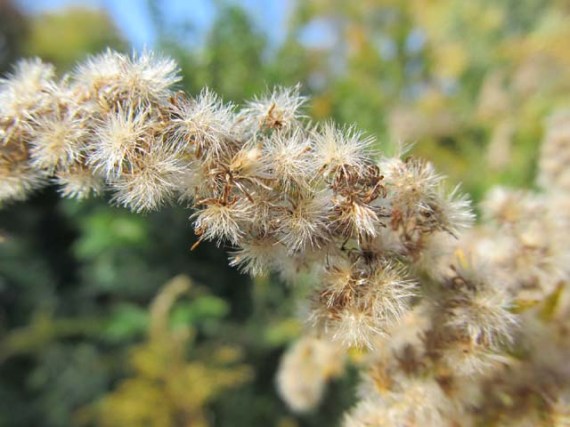
An inch-and-a-half inflorescence had 21 seedheads. The one above is longer than the one I dissected. Each seedhead had 15 or so seeds! The beige seeds were tinier than tiny. The word miniscule came to mind.
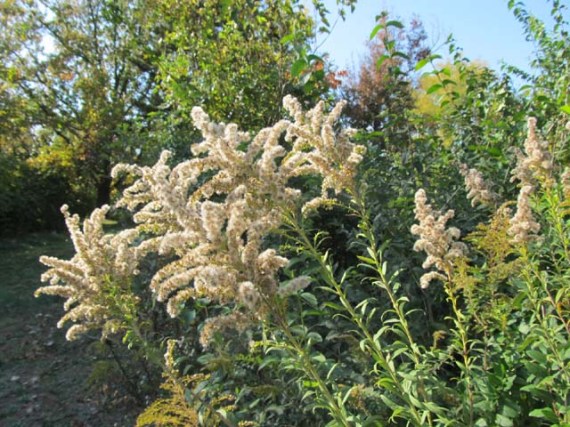
This picture shows the stalks of 2 goldenrod plants. I can’t even imagine how many seeds would be on these 2 plants. Wind will disperse them.












































